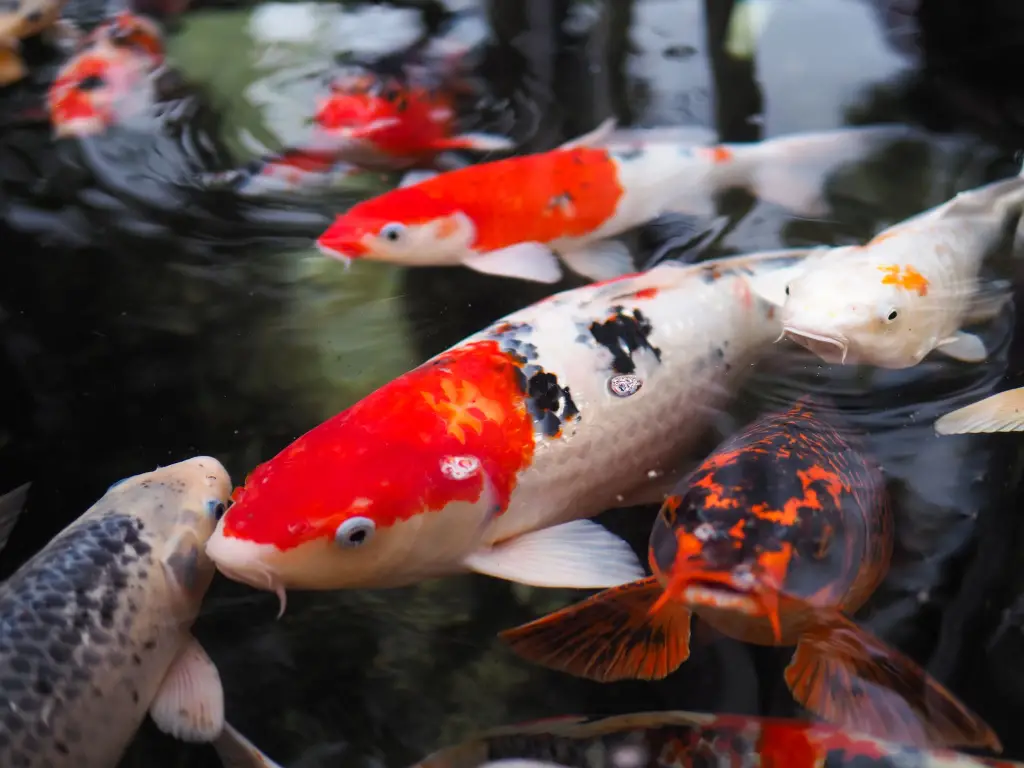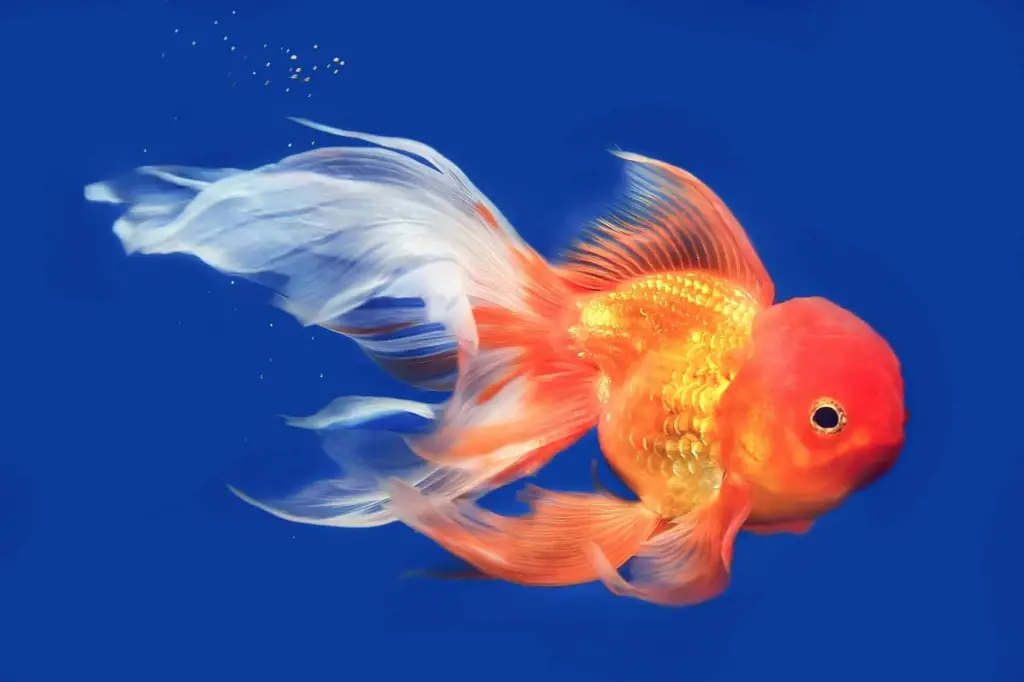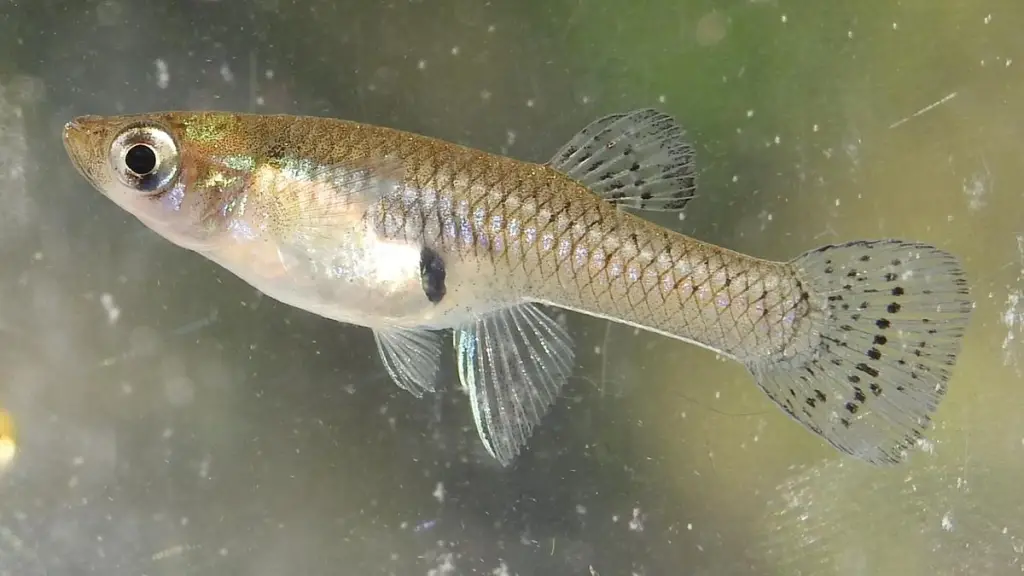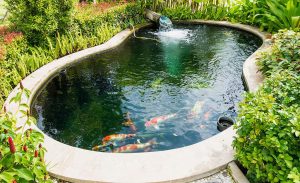Are you dreaming of adding a serene, bubbling pond to your backyard oasis? A well-designed water feature can transform your outdoor space into a tranquil retreat, providing a soothing soundtrack and a mesmerizing focal point. But to truly bring your pond to life, you’ll want to add some finned creatures to the mix.
Choosing the right fish for your backyard pond is key to creating a healthy, balanced ecosystem that’s both beautiful and low-maintenance. But with so many options out there, from colorful koi to humble mosquitofish, it can be tough to know where to start.
I’ve compiled the ultimate guide to the best fish for backyard ponds, taking into account factors like size, temperament, hardiness, and aesthetic appeal. Whether you’re a seasoned water gardener or a total newbie, you’ll find plenty of inspiration and practical advice to help you create your dream pond.
Also read: 30 Common Backyard Birds That Are Found in Georgia
Factors to Consider When Choosing Pond Fish

Before we get into the specific species that are best suited for backyard ponds, let’s talk about some of the key factors you’ll want to keep in mind as you make your selections.
1. Pond Size and Depth
The size and depth of your pond will be major determining factors in what types of fish you can successfully keep. As a general rule of thumb, you’ll want to allow for at least 1 gallon of water per inch of fish. So if you have a small, shallow pond, you’ll be limited to smaller species like mosquitofish or minnows.
Larger, deeper ponds (think 1000+ gallons and 3+ feet deep) can accommodate bigger fish like koi or goldfish. These species need plenty of space to swim and deeper water to overwinter in colder climates.
2. Climate and Temperature
Different fish species have different temperature requirements, so it’s important to choose fish that are well-suited to your local climate. If you live in an area with cold winters, you’ll want to select cold-hardy species that can survive a freeze, like koi or goldfish[.
If you’re in a warmer region, you’ll have more flexibility, but you’ll still want to avoid species that are too sensitive to temperature fluctuations. Some tropical fish, like guppies or swordtails, can be kept in outdoor ponds during the summer months but will need to be transferred inside to your aquarium when temperatures drop.
3. Compatibility and Temperament
When stocking your pond, it’s crucial to choose fish that are compatible with each other in terms of size, temperament, and feeding habits. You don’t want to mix aggressive species with more peaceful fish or put small fish in with larger predators that might see them as a tasty snack.
Some species, like koi and goldfish, are social creatures that do best in groups of their own kind. Others, like mosquitofish or minnows, can be mixed with a variety of pond mates. And some, like grass carp, are solitary by nature and may not play well with others.
4. Maintenance and Care
Different fish species have different care requirements in terms of feeding, water quality, and general maintenance. Some, like koi, are relatively high-maintenance and require a specialized diet and frequent water changes. Others, like mosquitofish, are practically self-sufficient and can thrive with minimal intervention.
Consider your own level of experience and the amount of time and effort you’re willing to put into maintaining your pond. If you’re a beginner or have a busy lifestyle, you may want to stick with hardier, lower-maintenance species.
5. Aesthetics and Personal Preference
Of course, one of the main reasons to add fish to your pond is for the sheer enjoyment of watching them swim and interact. So don’t forget to choose species that you personally find beautiful and fascinating!
Some pond keepers are drawn to the bright colors and patterns of fancy goldfish or the majestic grace of koi. Others prefer the more natural look of native species like minnows or bluegills. There’s no right or wrong answer here – it’s all about what brings you joy.
Now that we’ve covered the key considerations, let’s take a closer look at some of the best fish species for backyard ponds.
Top Picks for Backyard Pond Fish
1. Koi

Koi are perhaps the most iconic pond fish, and for good reason. These large, colorful carp are prized for their beauty, longevity, and personality. They come in a wide range of colors and patterns, from classic orange and white to more exotic varieties like butterfly or ghost koi.
Koi are hardy, adaptable fish that can thrive in a variety of pond conditions. They’re cold-tolerant and can survive winters in most climates as long as the pond is deep enough to prevent freezing. They’re also relatively peaceful and can coexist with other koi as well as goldfish and other larger pond species.
However, koi are not for everyone or every pond. They require a lot of space – at least 250 gallons per fish – and can grow up to 3 feet long. They also have a voracious appetite and produce a lot of waste, so they need excellent filtration and frequent water changes to maintain good water quality.
If you have a large, well-established pond and are willing to put in the work to keep your koi healthy and happy, they can be a stunning and rewarding addition to your water garden.
2. Goldfish

Goldfish are another popular choice for backyard ponds, and they offer many of the same benefits as koi on a smaller scale. They come in a dazzling array of colors, patterns, and body shapes, from the classic orange comet to the exotic lion head or bubble eye.
Goldfish are generally hardier and more low-maintenance than koi. They can tolerate a wider range of water conditions and don’t require as much space or filtration. They’re also more budget-friendly, with prices ranging from a few dollars for common varieties to several hundred for rare show-quality specimens.
Like koi, goldfish are social creatures that do best in groups of their own kind. They can also coexist peacefully with other similarly-sized pond fish, as long as they have enough room to swim and forage.
One thing to keep in mind with goldfish is that they are prodigious breeders. If you have both males and females in your pond, you may end up with more fish than you bargained for! Be prepared to either rehome the babies or provide extra filtration and aeration to accommodate the growing population.
3. Mosquitofish

If you’re looking for a low-maintenance, utilitarian pond fish that will earn its keep by keeping mosquito populations in check, look no further than the humble mosquitofish. These small, unassuming fish are native to the southern United States and have been widely introduced around the world as a biological control for mosquito larvae.
Mosquitofish are voracious predators that can consume hundreds of mosquito larvae per day. They’re also incredibly hardy and adaptable, able to tolerate a wide range of water conditions and temperatures. They can even survive in stagnant or polluted water that would be deadly to other fish species.
While mosquitofish may not win any beauty contests, they do have a certain understated charm. The females are larger and more robust, while the males are smaller and more streamlined. They come in shades of gray, brown, and olive, with occasional flashes of iridescent blue or green.
One thing to be aware of with mosquitofish is that they can be quite aggressive, especially towards other small fish. They’re best kept in species-only ponds or with larger, non-threatening pond mates like koi or goldfish.
4. Fathead Minnows

Fathead minnows are another native North American species that can be an excellent choice for backyard ponds. These small, silvery fish are peaceful, hardy, and adaptable, and are able to tolerate a wide range of water conditions and temperatures.
Like mosquitofish, fathead minnows are voracious predators of mosquito larvae and other small aquatic insects. They’re also prolific breeders, with females laying up to 10,000 eggs per season. This can be both a blessing and a curse, as a thriving population of minnows can help keep your pond ecosystem in balance, but an overabundance can lead to water quality issues.
Fathead minnows are schooling fish that do best in groups of at least 5-6 individuals. They can coexist peacefully with other small pond fish, as well as larger species like koi or goldfish. They’re also a favorite prey item for many species of pond birds and mammals, so they can help attract wildlife to your backyard oasis.
5. Golden Orfe

If you’re looking for a pond fish that’s a little out of the ordinary, consider the golden orfe. These sleek, torpedo-shaped fish are a type of carp that originates from Europe and Asia. They’re prized for their brilliant golden-orange coloration and active, energetic swimming style.
Golden orfe are relatively large fish, reaching lengths of up to 2 feet in ideal conditions. They’re also fast swimmers and powerful jumpers, so they need a pond with plenty of room to move and a secure cover to prevent escape. They’re social fish that do best in groups of at least 3-4 individuals.
In terms of care, golden orfe are relatively low-maintenance. They’re omnivorous and will eat a variety of foods, from commercial pellets to live insects and plant matter. They’re also cold-hardy and can survive winters in most climates as long as the pond is deep enough to prevent freezing.
One potential downside of golden orfe is that they can be skittish and easily spooked, especially in smaller ponds. They may not be the best choice if you’re looking for a fish that will come to greet you at the water’s edge. But if you enjoy watching their graceful, shimmering movements from afar, they can be a stunning addition to your pond.
Creating a Balanced Pond Ecosystem

No matter which fish species you choose for your backyard pond, it’s important to remember that they are just one part of a complex and delicate ecosystem.
To keep your pond healthy and thriving, you’ll need to create a balanced environment that meets the needs of all its inhabitants, from the tiniest microbes to the largest koi.
Here are a few key elements of a balanced pond ecosystem:
1. Proper Filtration
A good filtration system is essential for maintaining water quality and clarity in your pond. There are many different types of filters available (we found this on Amazon to be the most helpful one for us), from simple mechanical filters that remove debris to more advanced biological filters that use beneficial bacteria to break down waste.
The size and type of filter you need will depend on the size of your pond, the number and type of fish you have, and the amount of plant life present. As a general rule, you’ll want to choose a filter that can turn over the entire volume of your pond at least once per hour.
2. Regular Water Changes
Even with a good filtration system, it’s important to perform regular water changes to remove built-up toxins and replenish essential minerals. You should aim to change out about 10-20% of your pond water every week or two, depending on the size and stocking level of your pond.
When doing water changes, be sure to use a dechlorinator to remove any harmful chemicals from tap water. You can also use a pond vacuum to remove debris and sludge from the bottom of the pond.
3. Adequate Aeration
Proper aeration is crucial for maintaining healthy oxygen levels in your pond, especially during the hot summer months when water temperatures rise and dissolved oxygen levels drop. There are many ways to aerate your pond, from simple fountains and waterfalls to more advanced diffusers and air pumps.
Aim for a dissolved oxygen level of at least 5-6 ppm (parts per million) to keep your fish healthy and stress-free. You can use a simple test kit to monitor oxygen levels and adjust your aeration accordingly.
4. Balanced Plant Life
Plants play a vital role in the pond ecosystem, providing oxygen, filtration, and habitat for fish and other aquatic creatures. They also add beauty and interest to your water garden. However, it’s important to strike a balance between plant life and open water to prevent overcrowding and stagnation.
A good rule of thumb is to have about 50-70% of your pond surface covered with plants, with the rest left open for swimming and gas exchange. Choose a mix of submerged, floating, and marginal plants to create a diverse and dynamic ecosystem.
Some great plant options for backyard ponds include:
- Water lilies
- Lotus
- Hornwort
- Anacharis
- Water lettuce
- Cattails
- Rushes
5. Proper Feeding and Maintenance
Finally, to keep your pond fish healthy and thriving, it’s important to provide them with a balanced and appropriate diet. Different species have different nutritional needs, so be sure to choose a high-quality commercial food that’s formulated for your specific fish.
Avoid overfeeding, as uneaten food can quickly foul the water and lead to health problems. You should feed only as much as your fish can consume in 2-3 minutes, once or twice a day.
In addition to regular feeding, be sure to keep an eye out for any signs of disease or stress in your fish, such as lethargy, loss of appetite, or abnormal behavior. Catching and treating problems early can help prevent more serious issues down the line.
Conclusion
Adding fish to your backyard pond can be a rewarding and enjoyable experience, providing hours of entertainment and relaxation. By choosing the right species for your specific pond conditions and creating a balanced ecosystem, you can enjoy a thriving and beautiful water garden for years to come.
Whether you opt for the classic elegance of koi, the vibrant colors of goldfish, the practicality of mosquitofish, or the unique charm of golden orfe, there’s a perfect pond fish out there for every taste and budget.






